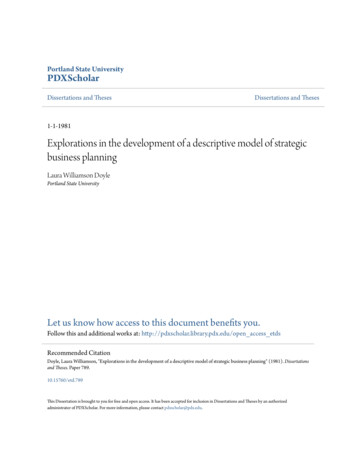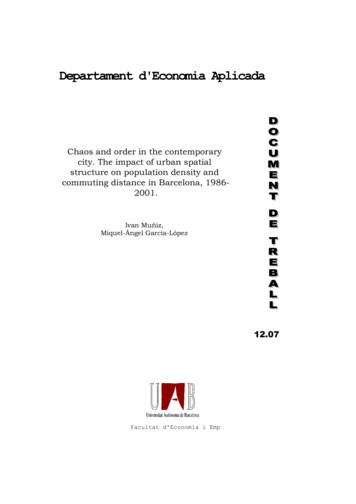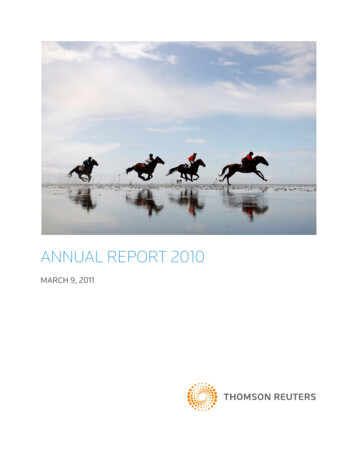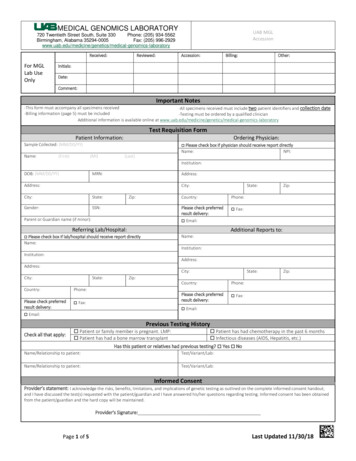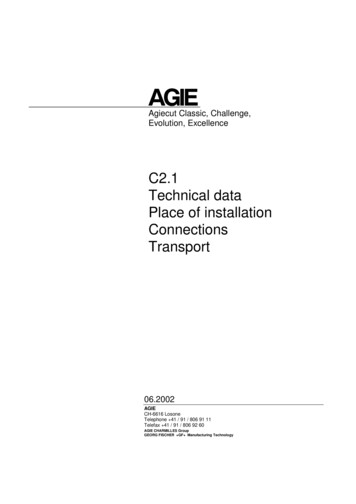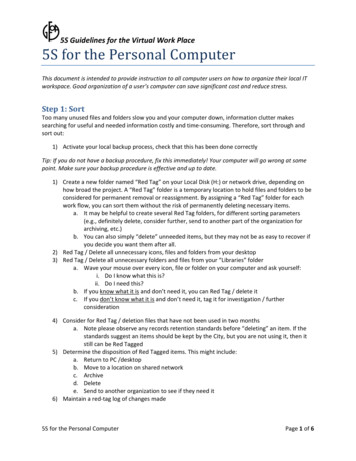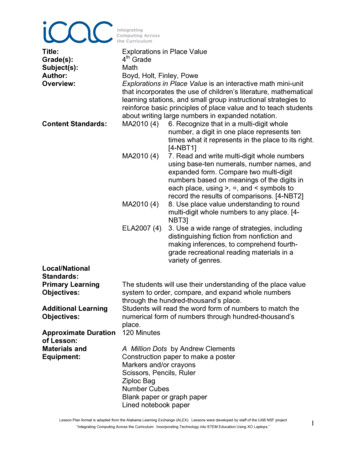
Transcription
Title:Grade(s):Subject(s):Author:Overview:Content Standards:Explorations in Place Value4th GradeMathBoyd, Holt, Finley, PoweExplorations in Place Value is an interactive math mini-unitthat incorporates the use of children’s literature, mathematicallearning stations, and small group instructional strategies toreinforce basic principles of place value and to teach studentsabout writing large numbers in expanded notation.MA2010 (4) 6. Recognize that in a multi-digit wholenumber, a digit in one place represents tentimes what it represents in the place to its right.[4-NBT1]MA2010 (4) 7. Read and write multi-digit whole numbersusing base-ten numerals, number names, andexpanded form. Compare two multi-digitnumbers based on meanings of the digits ineach place, using , , and symbols torecord the results of comparisons. [4-NBT2]MA2010 (4) 8. Use place value understanding to roundmulti-digit whole numbers to any place. [4NBT3]ELA2007 (4) 3. Use a wide range of strategies, includingdistinguishing fiction from nonfiction andmaking inferences, to comprehend fourthgrade recreational reading materials in avariety of genres.Local/NationalStandards:Primary LearningObjectives:The students will use their understanding of the place valuesystem to order, compare, and expand whole numbersthrough the hundred-thousand’s place.Additional LearningStudents will read the word form of numbers to match theObjectives:numerical form of numbers through hundred-thousand’splace.Approximate Duration 120 Minutesof Lesson:Materials andA Million Dots by Andrew ClementsEquipment:Construction paper to make a posterMarkers and/or crayonsScissors, Pencils, RulerZiploc BagNumber CubesBlank paper or graph paperLined notebook paperLesson Plan format is adapted from the Alabama Learning Exchange (ALEX). Lessons were developed by staff of the UAB NSF project“Integrating Computing Across the Curriculum: Incorporating Technology into STEM Education Using XO Laptops.”1
TechnologyResources Needed:Document CameraComputer with internet accessBackground/Preparation:Teacher Background Information:Expanded Form is a way to break up a number to show howmuch each digit in the number represents. In other words,expanded form is the method of pulling a number apart andexpressing it as a sum of the values of each digit.Student Background Information:In order to teach this lesson successfully, students shouldhave an understanding of the place value system to thehundred thousand’s place. They should also be able to readnumbers through 999,999 with accuracy.Step 11. Engage students by sharing the cover of thebook A Million Dots, by Andrew Clements.Ask the students what they think this bookwill be about.Step 22. As you begin reading to the students,explain that the pictures in the book containdots, and by the end of the book they willhave seen a million dots.Step 33. If you have access to a document camera,you can use this to display the book duringthe reading session. Stop after reading page9. This page has a chart about the “tallestmountains.” If you have a document camera,focus in on the chart at the bottom of thepage that lists the mountain heights. If youdo not have a document camera, use thechart you constructed prior to the lesson.Step 44. Pose the following problem to the students:National Geographic wants to display achart showing the heights of the tallestmountains on each of the Earth’s sevencontinents. However, they need theinformation to be in order from the shortestto the tallest mountain. Can you arrangethese numbers to show the correct orderfrom shortest to the tallest height?At this point, you should have the students formtheir cooperative learning groups.Procedures/Activities:Students will utilize the RAFT strategy todemonstrate what they have learned. Seeattachment.Lesson Plan format is adapted from the Alabama Learning Exchange (ALEX). Lessons were developed by staff of the UAB NSF project“Integrating Computing Across the Curriculum: Incorporating Technology into STEM Education Using XO Laptops.”2
Step 5Attachments:AssessmentStrategies:5.Distribute the ordering cards to each groupof students and have them begin workingtogether to order the numbers. Allowstudents 5-10 minutes to order and discussthe numbers.RubricsWorksheet Attachment Links ListEvaluate:Ongoing Assessment ideas are provided throughout thelesson above.Ongoing Assessment:As students are working with their partner, monitor studentprogress by observing their method of ordering numbers.What strategies do students use to order the numbers? Dothe students use words to justify their reasoning for placingnumbers in order? If students have numbers in an incorrectorder, ask probing questions to help them find their mistakes.Don’t tell students the order is wrong, instead ask, “Why didyou place the numbers in this order?” and “How do you knowthis order is correct?”Students should also be assessed on the IndependentPractice documents.The final Place Value Assessment should be given afterstudents have had ample practice with all of the place valueconcepts noted in the Alabama Course of Study.Extension: Students who finish assignments early can beginbuilding a One Million Dot display. An example of thisdisplay can be found fault.htmThe following Web Quest guides students through aproblematic learning situation where the purpose of theplace value system is questioned and evaluated.http://studenthome.nku.edu/ webquest/gabbard/ Make the Place Value Game and High Number TossGame available to the students (see “WorksheetAttachments” below). Continuing to play these gameswill increase understanding of place value conceptsand will help students develop good number strategies.If students experience difficulty understanding the concept ofplace value, peer tutoring, additional small group interactionand reteaching will be utilized. Remediation:Lesson Plan format is adapted from the Alabama Learning Exchange (ALEX). Lessons were developed by staff of the UAB NSF project“Integrating Computing Across the Curriculum: Incorporating Technology into STEM Education Using XO Laptops.”3
RAFT for Place Value Activity RoleScientistHistorian AudienceNationalGeographicGroup FormatBar GraphIllustrations ofMountainsTopic Arranging theheight ofmountains fromthe 7 continentsto show thecorrect orderfrom shortest tothe tallest height.Worksheet ist.rtfLesson Plan format is adapted from the Alabama Learning Exchange (ALEX). Lessons were developed by staff of the UAB NSF project“Integrating Computing Across the Curriculum: Incorporating Technology into STEM Education Using XO Laptops.”4
Rubric for GraphCATEGORY4321TitleTitle is creative andclearly relates to thetopic. It is printed at thetop of the graph.Title clearly relates to A title is present atthe topic beingthe top of thegraphed and isgraph.printed at the top ofthe graph.A title is notpresent.UnitsAll units are described(in a key or with labels)and are appropriatelysized for the data set.Most units aredescribed (in a key orwith labels) and areappropriately sizedfor the data set.All units aredescribed (in a keyor with labels) butare notappropriately sizedfor the data set.Units areneitherdescribed NORappropriatelysized for thedata set.Type of GraphChosenGraph fits the data welland makes it easy tointerpret.Graph is adequateand does not distortthe data, butinterpretation of thedata is somewhatdifficult.Graph distorts thedata somewhat andinterpretation of thedata is somewhatdifficult.Graph seriouslydistorts thedata makinginterpretationalmostimpossible.Neatness and Exceptionally wellNeat and relativelyAttractiveness designed, neat, andattractive. Colors areattractive. Colors that go distinguishable.well together are usedto make the graph morereadable.Neat, but the graphappears quite plain.Colors may bedistinguishable.Software proceduremay or may not befollowed.Appears messyand "throwntogether" in on4-6 errorsMore than 6errorsNo spelling, mechanics, 1-3 errorspunctuation, orcapitalization errorsLesson Plan format is adapted from the Alabama Learning Exchange (ALEX). Lessons were developed by staff of the UAB NSF project“Integrating Computing Across the Curriculum: Incorporating Technology into STEM Education Using XO Laptops.”5
Rubric for PosterCATEGORYRequiredElements4The poster includes allrequired elements aswell as additionalinformation.All items of importanceon the poster areclearly labeled withlabels that can be readfrom at least 3 ft.away.3All required elementsare included on theposter.Graphics RelevanceAll graphics arerelated to the topicand make it easier tounderstand. Allborrowed graphicshave a source citation.AttractivenessThe poster isexceptionally attractivein terms of design,layout, and neatness.All graphics arerelated to the topicand most make iteasier to understand.Some borrowedgraphics have asource citation.The poster isattractive in terms ofdesign, layout andneatness.GrammarThere are nogrammatical/mechanical mistakes on theposter.There are 1-2grammatical/mechanical mistakes on theposter.LabelsAlmost all items ofimportance on theposter are clearlylabeled with labelsthat can be read fromat least 3 ft. away.2All but 1 of therequired elementsare included onthe poster.Many items ofimportance on theposter are clearlylabeled with labelsthat can be readfrom at least 3 ft.away.All graphics relateto the topic. Oneor two borrowedgraphics have asource citation.The poster isacceptablyattractive though itmay be a bitmessy.There are 3-4grammatical/mechanical mistakes onthe poster.1Several requiredelements weremissing.Labels are toosmall to view ORno importantitems werelabeled.Graphics do notrelate to thetopic OR severalborrowedgraphics do nothave a sourcecitation.The poster isdistractinglymessy or verypoorly designed.It is notattractive.There are morethan 4grammatical/mechanicalmistakes on theposter.Lesson Plan format is adapted from the Alabama Learning Exchange (ALEX). Lessons were developed by staff of the UAB NSF project“Integrating Computing Across the Curriculum: Incorporating Technology into STEM Education Using XO Laptops.”6
Lesson Plan format is adapted from the Alabama Learning Exchange (ALEX). Lessons were developed by staff of the UAB NSF project “Integrating Computing Across the Curriculum: Incorporating Technology into STEM Education Using XO Laptops.” 4 RAFT for Place Value Activity Worksheet Attachments PlaceValueGame.rtf TallestMountains.rtf
